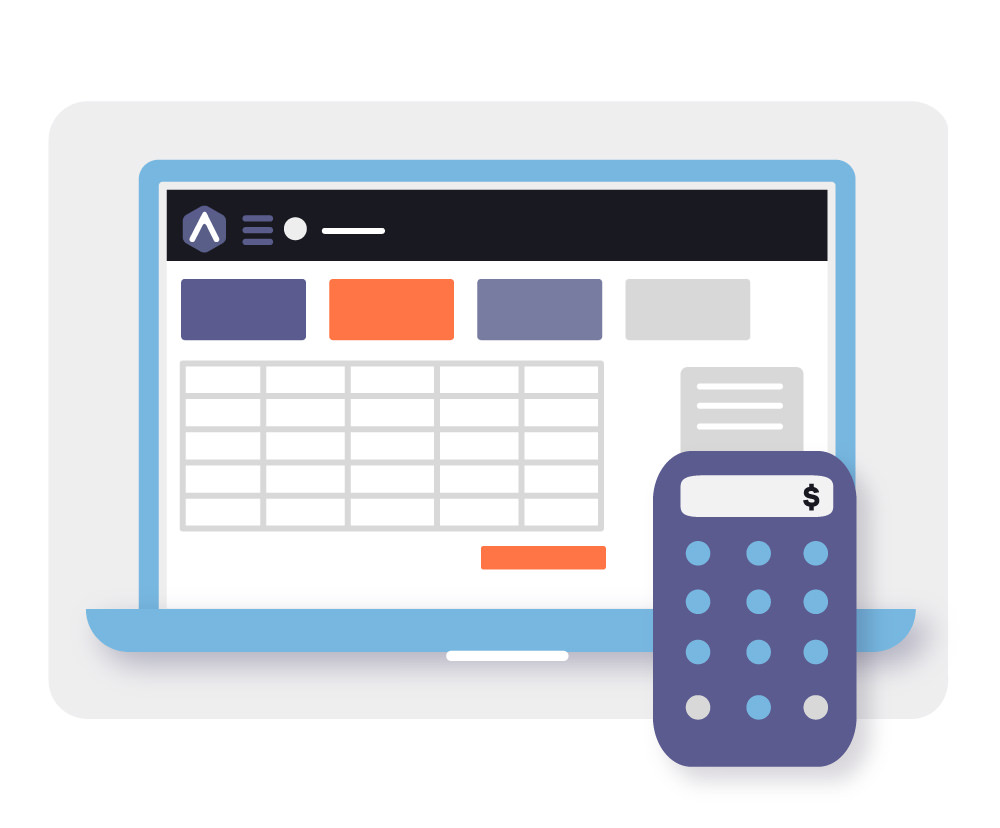Blog

It’s no secret that language shapes culture and that the words you choose carry meaning. As each school brings its own terminology and traditions, we want the platform to reflect that diversity more naturally, so families and staff see the language that feels familiar to them.
Today’s update solves that. With School Terminology Customization, you can now define the terms your school uses for core concepts like Class, Student, Guardian, and Staff. Once saved, your terminology appears throughout your school’s menus, forms, tables, and messages, giving everyone a consistent experience.
This change matters because terminology is not just labels. When families see the language they already use, they understand expectations faster and trust the system sooner. New staff onboard more smoot…

Running a school effectively means managing every dollar. But if fees and payments aren’t clear, it becomes harder to plan, budget, and keep everyone aligned.
Today’s update brings three improvements designed to simplify that picture:
A new Billing Options panel allows you to set who pays processing fees, choose between automatic and manual invoice collection, and define default due dates. When families pay fees, they see the processing fee clearly during checkout and on invoices. Reports, exports, and dashboards now display both Processing Fee and Net to School columns. You can now create Custom Invoices with multiple line items for a single student, which is linked automatically to their account and billing history.
Together, these changes make billing easier to trust and ea…

Running a school often means juggling billing, enrollment, and family details, all of which can eat up hours you don’t really have.
Today’s updates are designed to cut through that busywork. We’re giving you more flexibility in how you manage subscriptions and a simple, reliable way to keep track of the little (but important) details about your students and families.
Here’s everything new you can do with a.school:
Edit Subscription Prices
Have you ever needed to adjust a student’s subscription, only to realize you had to cancel and rebuild it from scratch? Not anymore. You can now update the price of an active subscription directly from its detail page.
That means no more canceling or recreating subscriptions, faster adjustments, and far less administrative time spent on b…

Every school collects important documents during enrollment—waivers, agreements, and signed policies. Today, we’re adding a way to keep those files organized and easy to access.
We’ve included a new section to each school’s profile where they can upload contracts, waivers, and other official PDFs. Everything lives in one place, attached directly to the student or guardian it belongs to.
This means no more digging through emails or folders to find the right file. Whether it’s a signed handbook agreement, a media release form, or a special program waiver, schools can upload it once and know it’s exactly where it should be.
This means clearer records, less back-and-forth, and faster access when you need it.
If you have any questions about using this new section, don’t hesitat…

School calendars and academic programs don’t always start “today.” They run on cohorts, semesters, and set terms. Tuition should follow the same rhythm. That’s exactly why we’re introducing Scheduled Subscriptions.
Now you can set subscriptions to begin exactly when a new session starts. Choose a future date, let payments run indefinitely, or cap them after a set number of cycles. It’s perfect for session-based programs or summer launches.
Families can secure their spot early while keeping payments tied to the official kickoff. Admins no longer need to calculate end dates or remember when to stop billing; the system handles all of it. That means fewer headaches, fewer mistakes, and more trust from families who know what to expect.
Everyone sees clear start and end dates from…

Managing your school’s finances is one of those essential tasks that can easily eat up your afternoon. Between tracking payments, sending reminders, and trying to understand revenue trends, it’s way too easy to get lost in financial busywork.
That’s why we’re excited to introduce some really helpful Billing Dashboard updates to help improve your workflow and save time. We’ve added some powerful new tools to give you instant clarity on your school’s financial health.
A clearer view of your school’s revenue
The new Payments Dashboard brings all your financial data into one place. Instead of hunting through multiple screens, you’ll instantly see total collections, outstanding balances, and upcoming payments in one place.
Visual charts show payment trend…
Too many reminders. Not enough responses. Whether it’s a start-of-year form or a school-wide event, sometimes it’s tough to get parents to notice.
That’s why we’ve added two powerful updates to a.school: login-blocked forms that make sure only the right people can respond, and smarter calendar notifications that actually get noticed. These changes are all about helping schools share important info once, and trust that it lands.
Login-Blocked Forms
Important forms shouldn’t slow your school down. Whether it’s a transportation form, a field trip permission slip, or anything else families need to complete, you can now make sure it happens right away.
With the new “required on login” setting, forms become part of the login process. Families will be prompted to fill them …

It’s been a while since we updated the blog, but we haven’t been standing still. Over the past few months, we’ve been busy behind the scenes making a.school better across the board.
First up: attendance. We’ve completely revamped how it works. Now, teachers can check students in and out with a single click, mark the whole class at once using a toggle, and access all their classes for the day from a single location.
Attendance reports are easier, too. Schools can generate them by date range and download them as CSV or PDF files right from the Classes section.
We also launched a new messaging experience. Messages now originate from a single central location and are categorized into four distinct types: Broadcast, Class, Family, and Staff.
This makes it easier to send annou…

Udemy, Coursera, LinkedIn Learning, Skillshare, and YouTube – there’s no shortage of platforms for sharing educational courses and content.
But even though the courses that populate these platforms are seemingly ubiquitous, they’re not always of the highest standard. We’ve all come across substandard creators or even ghost YouTube channels with libraries of content created entirely by AI.
But as an educator or content creator in the educational space, knowing how to create quality isn’t an option – it’s non-negotiable.
Not only to stand out among the thousands of other creators but also to ensure that your content is engaging and captivating for the learners who consume it.
So with that in mind, we’ll take a look at a number of effective strategies for creating …

As online learning continues to expand across various sectors of education including microschooling and traditional educational institutions, new tools are being developed daily to help with the technical tasks of teaching remotely.
We’ve already examined how school management software can assist schools in streamlining administrative tasks, as well as the benefits of using virtual classrooms to teach curriculums, but how can online schools minimize the burden of one of the most time-consuming tasks that all teachers face – grading?
Grading is important for a number of reasons – as we’ll discuss below – so how can digital schools design effective assessment and grading systems that ensure academic rigor, fairness, and meaningful feedback for students?
Below, we w…

When you think of a traditional classroom, what comes to mind?
Most likely a teacher standing at the front of the class, delivering a lecture while students follow along in their textbooks and take notes that they use to complete assignments at home.
This model works… to a point.
But when you honestly think about it, many students struggle to adopt this method – think about the number of kids you knew at school who couldn’t focus at all during their classes.
However, over the last decade, a new approach to teaching has emerged that flips this model on its head – the flipped classroom.
Below we’ll explore exactly what that means and the benefits associated with it.
What Is a Flipped Classroom?
A flipped classroom is an instructional approach that reverses where trad…

Whether you’re a microschool, large university, or tutor setting up a side teaching business, having the right tools, platforms, and protocols in place is vital for the success of your endeavor.
School management software has become increasingly popular among educators for its ability to streamline administrative tasks, saving them time and improving overall efficiency.
Below, we will discuss how school management software can help you streamline administrative tasks and allow you to focus on what really matters – teaching.
1. Attendance Tracking
One of the most time-consuming administrative tasks for educators is taking attendance.
With school management software, however, attendance tracking can be done in just a few clicks. You can quickly and easily mark student attendance, a…

Today we’re happy to announce a project that has been in the works for quite some time – the a.school curriculum.
The curriculum is a free resource comprised of modules on various subjects that all a.school instructors and school owners can use when creating their own lesson plans. It’s designed to showcase the full scope of exactly what a.school can do and demonstrate some of the really great courses you can make with a little bit of creativity.
While each module is full of useful and interesting content, it’s also a template that can be used to structure lessons and activities.
It will appear automatically as a sample class for existing and new users. Instructors are free to use as much or as little of it as they like.
Each module in the curriculum includes…

Critical thinking skills are essential for all students both in school and once they graduate. They allow students to think independently, evaluate information (and not accept everything at face value), and solve problems effectively.
They’re also highly valued in the workplace and are considered essential for successful careers in many different fields.
But critical thinking isn’t innate – it’s learned.
As an educator, you can play a significant role in fostering critical thinking skills in your students.
Here’s how:
Encourage Active Learning
Active learning is an approach that encourages students to be active participants in the learning process.
It involves engaging students in discussions, asking questions, and encouraging them to think deeply about what they are…

As more schools move to remote or hybrid learning models, it’s important for teachers to know how to create and manage virtual classrooms effectively.
A virtual classroom is an online platform where teachers can hold live sessions, share resources, and communicate with students in real-time. It’s an essential tool for ensuring that students can continue to learn and engage with course material no matter where they are in the world.
The benefits of using a virtual classroom are enormous. They allow students to get a high-quality education regardless of their geographic location or time zone. This is especially helpful for students who live in disadvantaged communities and can’t access schools physically.
If you’re thinking of setting one up yourself, consider these tips:
…

The idea of a “smart” classroom seems like something from a science fiction movie. But already artificial intelligence is already being used in schools to streamline administrative tasks, manage student data, and even help teachers create lesson plans. This technology has the potential to help teachers focus on what matters most: teaching kids how to think critically and solve problems.
This isn’t a singular opinion but one echoed by administrative heads throughout the world. According to UNESCO Director-General Audrey Azoulay, “Education will be profoundly transformed by AI. Teaching tools, ways of learning, access to knowledge, and teacher training will be revolutionized.”
The numbers also back this up. One report estimates the global AI in the education market is est…

Keeping track of appointments across various platforms is incredibly important when hosting and coordinating multiple school events simultaneously. To help keep things organized, we’re happy to announce the release of two calendar-related features.
The first is .ics downloads for calendar entries. Now, once you’ve created an event, you can export it as a .ics file that can be downloaded, shared, and used with any number of external calendar apps.
We’ve also introduced calendar subscriptions. This allows you to subscribe dynamically to your calendar from third-party apps, including Apple Calendar, Microsoft Outlook, and Google Calendar. Simply copy the in-app link and open it in your preferred calendar, and all of your a.school events and appointments will be display…

Project-based learning (PBL) is a growing educational trend and teaching method that focuses on applying knowledge from different disciplines to create real-world solutions.
It also encourages students to solve problems through collaboration and the use of critical thinking.
The end goal of project-based learning is for students to be able to apply what they’ve learned in the classroom to real-life situations.
How Does Project-Based Learning Work?
Unlike traditional scholastic learning in which students pore over books and are required to memorize information in written exams, project-based learning utilizes a much more hands-on approach to learning.
Students are required to work on a project over a long period of time – this could be as short as a week or as long as a w…

Recently, we’ve been thinking about how we can make it easier to bring users on board and integrate them quickly into your school.
Previously, adding users involved an invitation process that required you to know the user’s email address. We’ve done away with all that, and developed a way of adding users with usernames and access codes.
Now, you can add users to your school with nothing more than their name. Once entered, a.school will automatically generate a username and access instructions to enable the user’s account.
You have the option to send the access instructions via email or download the access instructions and send them manually.
Once a user receives their access instructions, they can either scan a QR code or follow a custom login URL, enter an access code…

We’ve touched on the concept of microschooling in previous blog posts without delving too deeply into what makes them unique or the degree to which they can benefit students, parents and teachers.
In this article, we’re going to take a detailed look at the benefits of microschooling.
Classes are purposefully kept small
In traditional schools, it’s commonplace for classes to have between 30 and 40 students being taught simultaneously. Classes of this size are not conducive to optimized learning, and many students won’t be able to have the stimulation or excitement needed to learn effectively.
Microschool classes are kept purposefully small, which means students and teachers get to know each other on a personal level, and special attention can be given to each person in the class…
